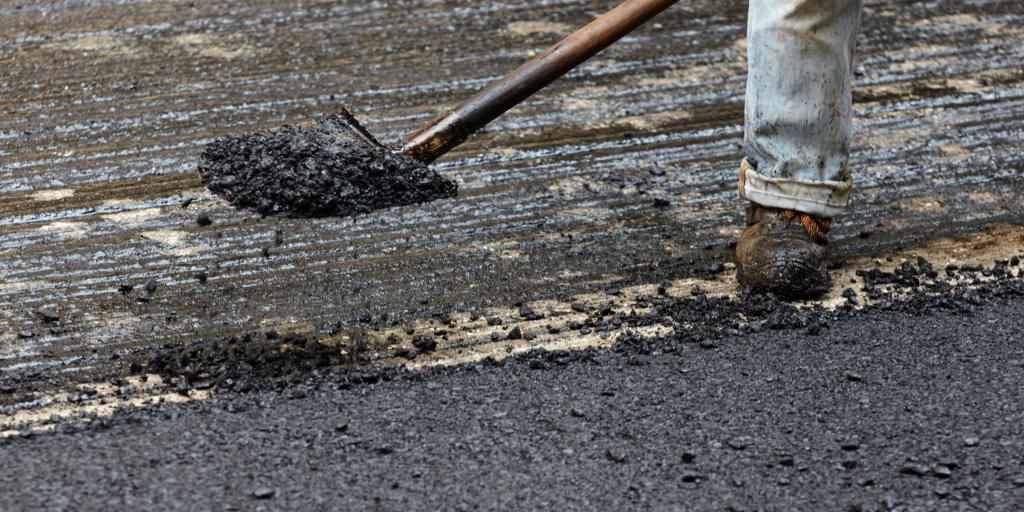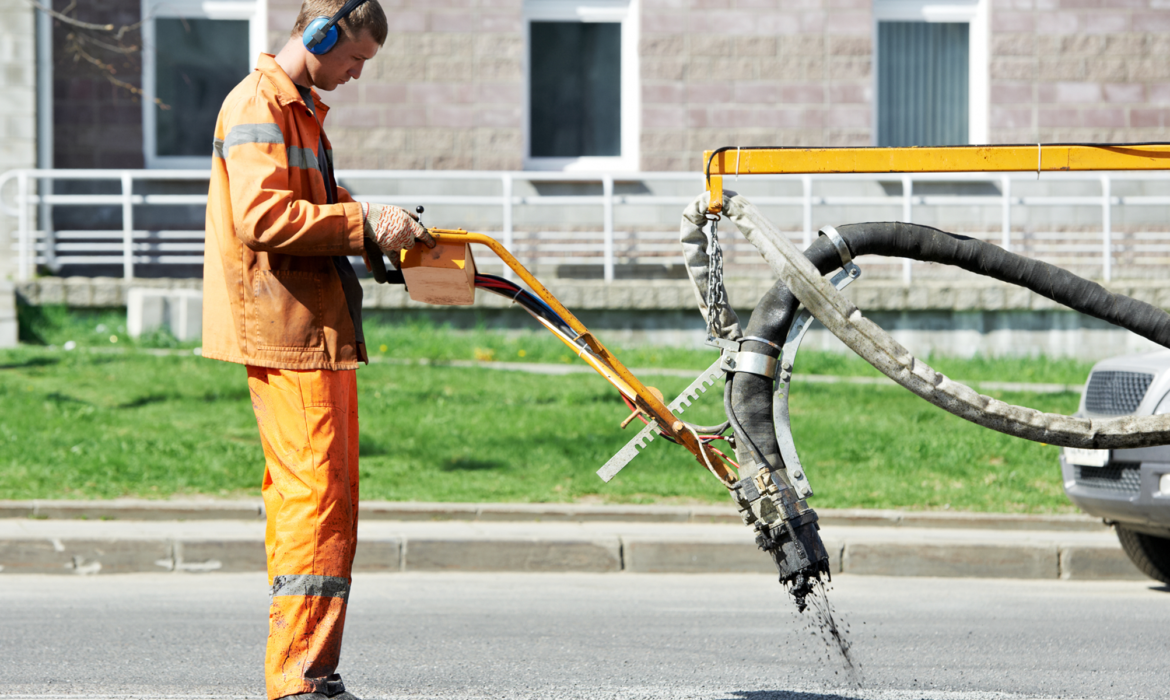Welcome to the season of renewal and rejuvenation! As winter ends and spring blooms, we should focus on asphalt pavement care, which is often neglected. You heard it right! What better time to pamper your asphalt surfaces than spring? We will discuss the necessity of regular asphalt pavement maintenance and present a checklist to keep your surfaces in good shape year-round.
Importance of Regular Maintenance
Asphalt pavement needs regular care to last. Early intervention can prevent modest concerns from becoming more extensive and expensive. Cracks and potholes can be avoided with proper maintenance. Moisture, temperature changes, and excessive traffic can degrade asphalt.
Cracks and potholes can result from expansion, contraction, and water seepage into the pavement’s subbase. Regular inspections for early repairs should be scheduled before they worsen. Regular maintenance also preserves the pavement look. Visitors and customers like a well-kept parking lot or driveway. Alternatively, neglected pavements with cracks and faded marks can look rundown.

Inspecting and Cleaning the Pavement
Inspecting and washing the pavement is essential for spring maintenance for asphalt surfaces. By checking the quality of your pavement, you can detect any issues that need to be repaired before they become more significant problems. Start by visually evaluating the entire surface, looking for cracks, potholes, or areas of deterioration.
Next, it’s vital to clean the pavement properly. Remove any debris, such as leaves, dirt, and gravel that may have accumulated over the winter months. A broom or blower can be used to sweep away loose particles. For persistent stains or oil spills, a pressure washer may be necessary.
Once the pavement is clear and debris-free, look at any cracks or potholes found during the inspection. Small cracks can often be fixed with a crack filler product developed explicitly for asphalt surfaces. Larger cracks or potholes may require professional repair services.
Regularly checking and cleaning your pavement enhances its beauty and prolongs its lifespan by preventing future damage. It allows you to solve minor concerns before they grow into major repairs. So, make sure to include this task in your spring maintenance checklist!
Repairing Cracks and Potholes
One of the most significant chores when preserving asphalt pavement is mending cracks and potholes. Over time, these concerns can emerge due to wear and tear, weather conditions, or heavy traffic. If left untreated, they can lead to more severe damage and costly repairs.
The first step in fixing cracks is to clean the afflicted area carefully. This involves eliminating any debris or vegetation growing in the cracks. Next, a crack filler should be placed to patch up the gaps and prevent future water infiltration. For wider cracks or potholes, a patching substance can be utilized to fill in the damaged area and create a smooth surface.
It’s crucial to note that appropriate preparation is key for effective crack and pothole repair. The surface should be clean and dry before applying any filler or repairing material. Additionally, it’s advisable to apply a sealant over repaired areas to provide an added layer of protection against potential damage.
Sealcoating the Pavement
Now that you have inspected and cleaned your asphalt pavement, it’s time to move on to the next step in spring maintenance – sealcoating. This protective coating is vital for keeping your pavement in peak shape throughout the year.
Sealcoating works as a barrier against damaging factors like UV radiation, water, oil spills, and road wear. By adding this thin layer of protective coating, you may greatly extend the longevity of your asphalt surface. It not only enhances its beauty but also prevents fractures and potholes from appearing.
Before applying sealcoat, be careful to patch any existing cracks or potholes. Clean the surface completely by removing debris and dirt with a broom or power blower. You want the pavement to be clean and dry before applying the sealant.
When picking a sealcoat product, look for high quality materials that are specifically intended for asphalt surfaces. Consider features including durability, weather resistance, and simplicity of application.
Apply the sealcoat uniformly using a squeegee or spray system. Start from one end of the pavement and walk towards the other side in overlapping strokes. Take care not to apply too thick of a coat, as it may result in an uneven finish.
Allow sufficient drying time before opening up the pavement for regular use again. Typically, it takes roughly 24-48 hours for the seal coat to fully cure, depending on environmental conditions such as temperature and humidity levels.
Striping and Marking the Pavement
Now that you have inspected, cleaned, and restored your asphalt surface, it’s time to focus on striping and marking. This phase is vital for boosting safety and order in parking lots or streets.
When it comes to striping, precision is crucial. Ensure that all lines are crisp, straight, and well-defined. Faded or worn-out markings might cause confusion among cars or pedestrians. You can prevent accidents and keep traffic moving smoothly by giving clear directions through correctly defined lanes, crosswalks, arrows, and symbols.

Consider using high quality paint specifically developed for outdoor usage on asphalt surfaces. This sort of paint is sturdy enough to survive weather conditions such as rain or intense sunshine.
Tips for Maintaining Asphalt in Between Seasons
1. Keep it clean: Regularly brush or blow off material such as leaves, dirt, and garbage from the surface of your asphalt pavement. This will prevent them from accumulating and causing damage over time.
2. Address spills promptly: Clean them up as quickly as possible if you discover any oil or chemical spills on your asphalt. These pollutants can permeate the pavement and undermine its structure if left untreated.
3. Watch out for vegetation: Keep an eye out for any weeds or grass growing through gaps in your asphalt. Remove them carefully to prevent any damage and guarantee a smooth surface.
4. Avoid heavy loads: Try to reduce heavy vehicle traffic on your asphalt during periods when the ground is soft due to rain or thawing snow. Heavy loads can produce rutting and depressions in the pavement.
5. Perform frequent inspections: Take a walk around your property often and look for signs of cracking, potholes, or other types of damage on the asphalt surface. Early detection allows you to fix these issues before they escalate.
6. Maintain good drainage: Ensure that gutters are clean of debris and operating correctly so that water drains away from your pavement effectively. Poor drainage can lead to standing water, which can degrade the integrity of the asphalt over time.
By following these suggestions consistently throughout the year, you’ll be able to extend the lifespan of your asphalt pavement while keeping it safe and appealing for years to come!

